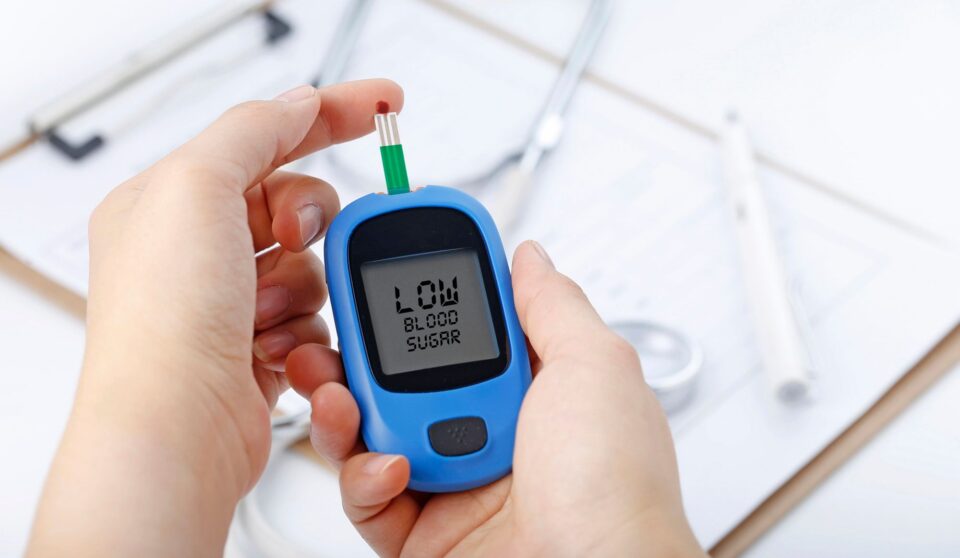Sema
Understanding Diabetes: Types, Causes, and Symptoms
Diabetes is a chronic condition that affects how your body processes blood sugar (glucose). There are two main types of diabetes:
-Type 1 Diabetes: This is an autoimmune disease where the body’s immune system attacks and destroys the insulin-producing cells in the pancreas. It’s usually diagnosed in children and young adults.
– Type 2 Diabetes: This occurs when the body becomes resistant to insulin, or when the pancreas cannot produce enough insulin. Type 2 is the most common form of diabetes and is often linked to lifestyle factors like poor diet, lack of exercise, and being overweight.
Causes of Diabetes
– Genetics (family history)
– Unhealthy diet
– Lack of physical activity
– Age (risk increases with age)
– Obesity and excess weight
Common Symptoms
– Frequent urination
– Increased thirst and hunger
– Unexplained weight loss or gain
– Blurry vision
– Fatigue
If you experience any of these symptoms, it’s essential to get tested for diabetes.
Preventing Type 2 Diabetes: Lifestyle Changes That Matter
While Type 1 diabetes cannot be prevented, Type 2 diabetes can often be delayed or even prevented through lifestyle changes. Here are some simple but effective ways to reduce your risk:
1. Eat a Balanced Diet: Focus on whole grains, fruits, vegetables, lean proteins, and healthy fats. Avoid sugary snacks and processed foods.
2. Exercise Regularly: Physical activity helps your body use insulin more effectively. Aim for at least 30 minutes of moderate exercise most days of the week.
3. Maintain a Healthy Weight: Losing even a small amount of weight (5-10% of your body weight) can significantly reduce your risk of developing Type 2 diabetes.
4. Monitor Blood Sugar Levels: Regularly checking your blood sugar can help you keep track of your health, especially if you’re at risk.
Diabetes and Its Complications: Why Early Detection is Key
Diabetes is a serious condition that can lead to long-term complications if left uncontrolled. These can include:
– Heart disease and stroke
– Kidney disease
– Nerve damage (neuropathy)
– Vision problems, including blindness
– Poor circulation, leading to amputations
The good news is that these complications can often be prevented or managed through regular monitoring, medication, and healthy lifestyle choices. Early detection is crucial in preventing the progression of the disease.
Managing Diabetes: Tips for a Healthier Life
Living with diabetes requires ongoing management, but it’s possible to lead a healthy and fulfilling life. Here are some tips for managing diabetes effectively:
1. Monitor Your Blood Sugar: Regular testing allows you to understand how food, exercise, and medication affect your blood sugar levels.
2. Take Your Medications as Prescribed: Whether it’s insulin for Type 1 diabetes or oral medications for Type 2, following your doctor’s instructions is essential.
3. Eat Small, Balanced Meals: Eating smaller, more frequent meals can help maintain stable blood sugar levels throughout the day.
4. Stay Active: Regular exercise, even a simple walk, can help regulate blood sugar and improve overall health.
5. Stress Management: High stress levels can affect blood sugar levels. Practice stress-reducing activities like meditation, yoga, or deep breathing exercises.
The Importance of Regular Checkups for Diabetic Patients
If you have diabetes, regular doctor visits are essential. Your healthcare provider will monitor your blood sugar levels, check for complications, and adjust your treatment plan as necessary.
Key screenings for diabetic patients include:
– Blood pressure checks
– Cholesterol and lipid tests
– Kidney function tests
– Eye exams (to check for diabetic retinopathy)
– Foot exams (to detect neuropathy)
Regular checkups help ensure that any potential issues are detected early, preventing more serious health problems down the line.
Raising Awareness: Diabetes and Its Global Impact
Diabetes has become a global health crisis. According to the World Health Organization (WHO), more than 400 million people worldwide are living with diabetes, with the majority having Type 2 diabetes.
The rise in diabetes cases is largely due to modern lifestyles, including poor diet, sedentary habits, and increasing obesity rates. But there’s hope—by raising awareness, we can make significant strides toward reducing the prevalence of this disease.
Educate Yourself: Understanding the risks, symptoms, and prevention methods is key to taking control of your health.
Encourage Healthy Choices**: Promoting better food choices and more physical activity in communities can help prevent the spread of Type 2 diabetes.
Support for Diabetic Patients: Building a Strong Community
If you or someone you know is living with diabetes, know that you’re not alone. Support networks—whether through healthcare professionals, family, friends, or online communities—can provide vital emotional and practical help.
Join Diabetes Support Groups: Connecting with others facing similar challenges can provide motivation, advice, and encouragement.
Seek Professional Guidance: A dietitian, diabetes educator, or counselor can help you navigate the complexities of managing diabetes.
Remember, with the right knowledge, resources, and support, living well with diabetes is entirely possible.

